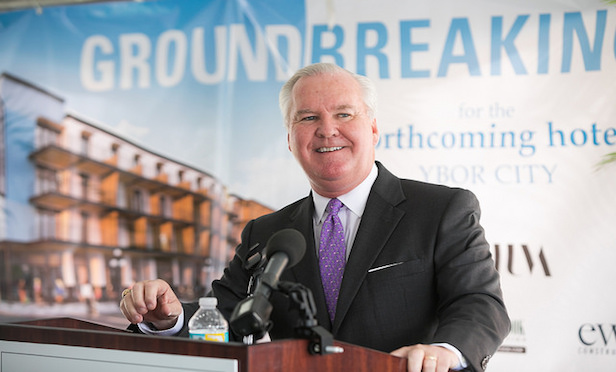© Touchpoint Markets, All Rights Reserved. Request academic re-use from www.copyright.com. All other uses, submit a request to [email protected]. For more inforrmation visit Asset & Logo Licensing.
Tampa Named 'Most Livable' City In America
The designation made during the conference of mayors' 86th annual meeting in Boston stems from Tampa's first place finish in its 39th annual City Livability Awards Program. The city of Broken Arrow, OK, earned the top spot in the small cities category.
Trending Stories
Events
- Real EstateGlobeSt. ELITE Women of Influence (WOI) 2025July 21, 2025 - DenverGlobeSt. Women of Influence Conference celebrates the women who drive the commercial real estate industry forward.More Information
- Real EstateGlobeSt. Multifamily Fall 2025October 15, 2025 - Los AngelesJoin the industry's top owners, investors, developers, brokers & financiers at THE MULTIFAMILY EVENT OF THE YEAR!More Information
Recommended Stories
Tariff Turbulence Returns to CRE with 50% Copper Duty
By Erik Sherman | July 11, 2025
A 35% tariff on Canadian goods also looms large.
Disagreement Grows Among Fed Officials on Rate Cut Timing
By Erika Morphy | July 10, 2025
The tariff debate is disrupting the Fed’s policy playbook.
Why Vintage Retail Strip Centers Are Gaining a Second Wind
By Kelsi Maree Borland (Sponsored by Matthews Real Estate Investment Services) | July 09, 2025
The high cost of construction has stunted new development, creating an opportunity for owners of older retail properties to fill the gap.
Resource Center

Report
Sponsored by TheGuarantors
2025 State of Renter Delinquency and Default
Renter default is a critical challenge. This report, based on a survey of 400+ multifamily professionals, reveals key trends, economic drivers, and mitigation gaps to help you build resilience in 2025. You'll gain insights into the root causes of renter default, the operational strains it can put on your portfolio, and strategies you can leverage to protect your investments and maintain stability.

Assessment
Sponsored by Building Engines
CRE Property Management Assessment: Your Building Operations Scorecard
How do your building operations measure up? Use this detailed scorecard to evaluate your operational approach across five key areas.

White Paper
Sponsored by TheGuarantors
5 Strategic Moves to Protect Your Multifamily NOI in 2025's Squeeze
Skyrocketing economic uncertainty means it’s essential for multifamily owners and operators to strengthen risk mitigation capabilities. Discover expert insights from industry experts, including the President of NMHC, to tackle 2025 challenges such as slower lease-ups, cost pressures, renter fraud, high reliance on concessions, and more.





